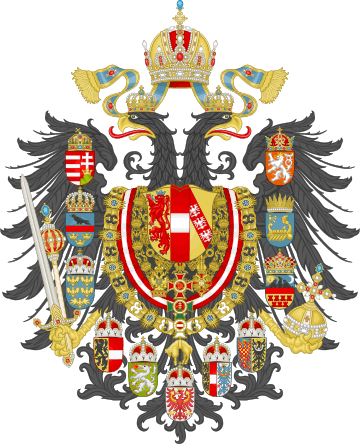Franz Anton von Kolowrat-Liebsteinsky
| Hochgeboren Franz Anton Graf von Kolowrat-Liebsteinsky | |
|---|---|
 Lithograph after a portrait by Johann Ender | |
| 1st Minister-President of the Austrian Empire | |
|
In office 20 March 1848 – 19 April 1848 | |
| Monarch | Ferdinand I |
| Preceded by | Klemens von Metternich (as State Chancellor) |
| Succeeded by | Karl Ludwig von Ficquelmont |
| The Supreme burgrave | |
|
In office 1811–1826 | |
| Monarch | Francis I |
| Preceded by | Josef Frantisek Wallis |
| Succeeded by | Karl, Count Chotek of Chotkow and Wognin |
| Personal details | |
| Born |
31 January 1778 Prague, Bohemia |
| Died |
4 April 1861 (aged 83) Vienna, Austria |
| Religion | Roman Catholic Church |
Count Franz Anton von Kolowrat-Liebsteinsky (Czech: František Antonín Kolovrat-Libštejnský; 31 January 1778 – 4 April 1861) was a Bohemian noble and Austrian statesman from the House of Kolowrat. As a moderate liberal politician, he was one of the major opponents of State Chancellor Prince Klemens von Metternich during the Vormärz era. In the March Revolution of 1848, Kolowrat became the first constitutional Minister-President of Austria, however, he resigned after one month in office.
Life
He was born and raised in the Bohemian capital Prague, a scion of the Bohemian family of high nobility (the House of Kolowrat), whose ancestors had already served under the Luxembourg emperor Charles IV. Having finished his studies at Charles University, Franz Anton entered the Austrian civil service at the Beroun district administration in January 1799. During the Napoleonic Wars he achieved the office of a stadtholder of the Habsburg emperor Francis I of Austria at Prague[1] and in 1810 became Oberstburggraf of the Bohemian kingdom.[2] Contrary to Chancellor Metternich, he encouraged Czech cultural and civic-national movements, exemplified by the founding of the Prague National Museum in 1818.
Kolowrat's rivalry with Metternich intensified when in 1826 the emperor called him to Vienna, where he was elevated to a member of the Austrian State Council responsible for the Interior and Finances. The tensions between him and the chancellor continued: while Metternich favored a strong army, Kolowrat reduced the military budget.[3] After the accession of Francis' incapable son Ferdinand I to the throne in 1835, Kolowrat together with Metternich led the Secret State Conference, the de facto government of the Empire from 1836 to 1848. However, the continuous disagreement between the two leaders palsied the Austrian politics and ultimately contributed to collapse of the "Metternich system".
Upon the outbreak of the Revolutions of 1848, Metternich had to resign. A ministers' conference was established and Kolowrat assumed the newly created office of an Austrian minister-president, which he nevertheless laid down after only one month between 3–5 April, officially for health reasons.
Kolowrat retired to private life; he died in Vienna aged 83. With his death, the Liebsteinsky branch of the Kolowrat dynasty became extinct.
Decorations
- Order of the Golden Fleece
- Order of Leopold
- Order of St. Andrew
- Order of St. Anna
- Order of St. Vladimir
- Order of the White Eagle
- Order of Alexander Nevsky
- Venerable Order of Saint John
References
- ↑ K.u.K. office, head of country administration
- ↑ Highest office of the Bohemian kingdom, held by a Lord (baron), member of the higher of the two ranks of nobility. After 1627 largely ceremonial, nevertheless prestigious, as the holder acted at ceremonial occasions as the prime representant of Bohemian nobility towards the king. Before 1627, in king's absence held his place at the land Diet and High Court, when king was present, was seated at his feet (i.e. at the central place).
- ↑ Rothenburg, G. The Army of Francis Joseph. West Lafayette: Purdue University Press, 1976. p 10.
External links
Template:Commscat
| Preceded by Klemens von Metternich (State Chancellor) |
Minister-President of the Austrian Empire 1848 |
Succeeded by Karl Ludwig von Ficquelmont |
| Preceded by Károly Zichy |
Minister of State of the Austrian Empire for the Interior 1826 – 1848 |
Succeeded by Franz von Pillersdorf |
